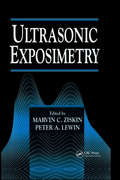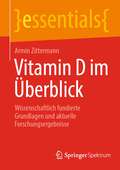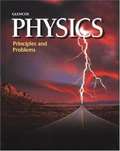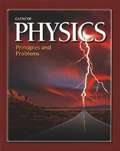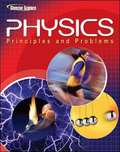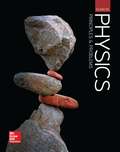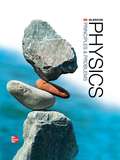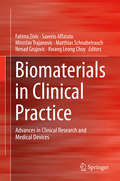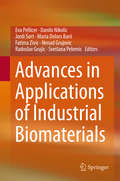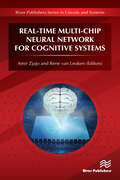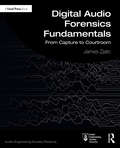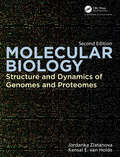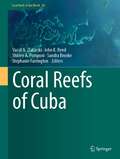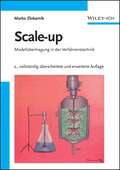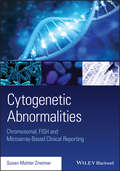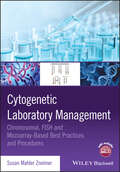- Table View
- List View
Ultrasonic Exposimetry
by Marvin C. Ziskin Peter A. LewinUltrasonic Exposimetry presents the fundamentals of ultrasonics and discusses the theoretical background of acoustic wave generation and reception. Measurements, instrumentation, and interpretation of measured data (including error analysis) are examined in detail.
Earth Squad: 50 People Who Are Saving the Planet
by Alexandra ZissuJoin fifty inspiring and extraordinary environmental crusaders working to save our planet and see how you can make a difference just like them. Kids across the globe will be moved by the passion of these amazing eco-warriors who have dedicated their lives to making our world a better place. Alongside dynamic illustrations and entertaining biographical information, you'll find practical tips that anyone can do to help save the earth. Every one of us can make a difference, and, together as an Earth Squad, we can change the world.Will Allen * Anohni * Yann Arthus-Bertrand * Inka Saara Arttijeff * David Attenborough * Precious Brady-Davis * Erin Brockovich * Vicki Buck * Rachel Carson * Yvon Chouinard * Opha Pauline Dube * Lamya Essemlali * Christiana Figueres * Eileen Fisher * Eunice Newton Foote * Wan Gang * Al Gore * James Hansen * Vanessa Hauc * Hilda Heine * Chai Jing * Alexandra Koroleva * Winona LaDuke * Dr. Phil Landrigan * Annie Leonard * Wangari Maathai * Xiuhtezcatl Martinez * Gina McCarthy * William McDonough * Bill McKibben * Angela Merkel * Charles Moore * Margaret "Mardy" Murie * Alexandria Ocasio-Cortez * Gabriel Orozco * Carlo Petrini * Mark Ruffalo * Pete Seeger * Peggy Shepard * Vandana Shiva * Marina Silva * Sandra Steingraber * David Suzuki * Greta Thunberg * Sarah Toumi * The Trimates * Alexandria Villaseñor * Alice Waters * Charles Windsor * Ken Yeang
Blood Matters: Five Civilized Tribes and the Search of Unity in the 20th Century (Native Americans: Interdisciplinary Perspectives)
by Erik March ZissuThis study explores how the five tribes of Oklahoma - Cherokees, Chickasaws, Choctaws, Creeks, and Seminoles - strove to achieve political unity within their tribes during the first decades of the 20th century by forging a new sense of peoplehood around the idea of blood.
Max Bense: Werk - Kontext - Wirkung (Abhandlungen Zur Philosophie Ser.)
by Claus Zittel Andrea Albrecht Masetto Bonitz Alexandra SkowronskiMax Bense (1910–1990) gilt als Vorreiter der Computerkunst und der Technikphilosophie und war ein engagierter Förderer von Kunst und Literatur, Promotor interdisziplinären Denkens und politischer Provokateur. Häufig ist es bei der Auseinandersetzung mit Bense jedoch bei diesen Etikettierungen geblieben. Der Sammelband nimmt daher eine konzertierte Neuaufnahme der Diskussion von Max Benses Arbeiten aus literaturwissenschaftlicher, philosophie- und wissenschaftshistorischer sowie aus medien- und ästhetiktheoretischer Perspektive vor. Er versammelt Beiträge zu Themenkomplexen wie der Semiotik, Technikphilosophie, experimentellen Poesie und Ästhetiktheorie, zu Benses lokalen und internationalen Kontakten und Netzwerken sowie zu seinem publizistischen Verhalten im Nationalsozialismus und in der Nachkriegszeit.
Vitamin D im Überblick: Wissenschaftlich fundierte Grundlagen und aktuelle Forschungsergebnisse (essentials)
by Armin ZittermannVitamin D kann in der Haut durch die UV-B-Strahlung der Sonne gebildet sowie über bestimmte Lebensmittel und Supplemente zugeführt werden. Die aktive Vitamin-D-Form ist ein Steroidhormon mit Wirkungen in einer Vielzahl von Geweben. Ein Vitamin-D-Mangel ist in Deutschland weit verbreitet. Es gibt eine Reihe von Risikogruppen, vor allem aufgrund unzureichender kutaner Synthese. Neben den klassischen Vitamin-D-Mangelerkrankungen Rachitis und Osteomalazie ist ein Vitamin- D-Mangel vermutlich auch ein Risikofaktor für verschiedene weit verbreitete chronische Erkrankungen sowie für eine verkürzte Lebenserwartung. Zur Verbesserung der Vitamin-D-Versorgung der Bevölkerung sind umfangreichere Anreicherungsmaßnahmen von Lebensmitteln sowie eine stärkere Verwendung von Supplementen zu fordern.
The Handy Physics Answer Book
by Paul W ZitzewitzAnswers more than eight hundred questions about physics, ranging from everyday life applications to the latest explorations in the field.
Physics: Principles and Problems (Physics:princ And Problems Ser.)
by Paul W. ZitzewitzScience textbook for high school students.
Physics: Principles and Problems
by Paul W. ZitzewitzGlencoe Physics covers: matter, energy, mechanics, waves, light, electricity and modern physics.
Physics: Principles and Problems
by Paul W. Zitzewitz T. G. ElliottAccelerate student learning with the perfect blend of content and problem-solving strategies Physics: Principles and Problems offers you integrated support, abundant opportunities for problem solving, and a variety of realistic applications. The program has a balance of good conceptual presentation with a strong problem-solving strand. All the program resources are organized in a way that saves you preparation time and allows you to meet the needs of students in your diverse classroom.
Physics: Principles & Problems
by Paul W. Zitzewitz David G. Haase Kathleen A. HarperAccelerate student learning with the perfect blend of content and problem-solving strategies Physics: Principles and Problems offers you integrated support, abundant opportunities for problem solving, and a variety of realistic applications. The program has a balance of good conceptual presentation with a strong problem-solving strand. All the program resources are organized in a way that saves you preparation time and allows you to meet the needs of students in your diverse classroom.
Glencoe Physics: Principles and Problems
by Paul W. Zitzewltz David G. Haase Kathleen A. HarperPhysics Textbook
Biomaterials in Clinical Practice: Advances in Clinical Research and Medical Devices
by Fatima Zivic Nenad Grujovic Saverio Affatato Miroslav Trajanovic Matthias Schnabelrauch Kwang Leong ChoyThis book covers the properties of biomaterials that have found wide clinical applications, while also reviewing the state-of-the-art in the development towards future medical applications, starting with a brief introduction to the history of biomaterials used in hip arthroplasty. The book then reviews general types of biomaterials - polymers, ceramics, and metals, as well as different material structures such as porous materials and coatings and their applications - before exploring various current research trends, such as biodegradable and porous metals, shape memory alloys, bioactive biomaterials and coatings, and nanometals used in the diagnosis and therapy of cancer. In turn, the book discusses a range of methods and approaches used in connection with biomaterial properties and characterization - chemical properties, biocompatibility, in vivo behaviour characterisation, as well as genotoxicity and mutagenicity - an d reviews various diagnostic techniques: histopathological analysis, imagining techniques, and methods for physicochemical and spectroscopic characterization. Properties of stent deployment procedures in cardiovascular surgeries, from aspects of prediction, development and deployment of stent geometries are presented on the basis of novel modelling approaches. The last part of the book presents the clinical applications of biomaterials, together with case studies in dentistry, knee and hip prosthesis. Reflecting the efforts of a multidisciplinary team of authors, gathering chemical engineers, medical doctors, physicists and engineers, it presents a rich blend of perspectives on the application of biomaterials in clinical practice. The book will provide clinicians with an essential review of currently available solutions in specific medical areas, also incorporating non-medical solutions and standpoints, thus offering them a broader selection of materials and implantable solutions. This work is the result of joint efforts of various academic and research institutions participating in WIMB Tempus project, 543898-TEMPUS-1-2013-1-ES-TEMPUS-JPHES, "Development of Sustainable Interrelations between Education, Research and Innovation at WBC Universities in Nanotechnologies and Advanced Materials where Innovation Means Business", co-funded by the Tempus Programme of the European Union.
Advances in Applications of Industrial Biomaterials
by Fatima Zivic Eva Pellicer Danilo Nikolic Jordi Sort Maria Baró Nenad Grujovic Radoslav Grujic Svetlana PelemisThis book presents recent advances in the development of biomaterials for industrial applications, and discusses the potential for substituting environmentally hazardous substances with environmentally friendly and degradable components. Focusing on both the material development and production technologies, it reviews different materials, as well as new production technologies and application areas. It also highlights the importance of incorporating organic materials into different composites to enable consumption of otherwise waste materials. Further it addresses biopolymers for the food industry, e. g. edible films and coatings in food production and biodegradable materials; the automotive industry; bio fuels, such as biodiesel based on organic constituents; and green composites in marine applications. Environmental protection aspects related to the protection of cultural heritage, and new nanoparticles, such as nano zerovalent iron, are also reviewed. Aimed at young researchers, professionals, chemical engineers and marine engineers, the book is the result of the joint efforts of different academic and research institutions participating in the WIMB Tempus project, 543898-TEMPUS-1-2013-1-ES-TEMPUS-JPHES, "Development of Sustainable Interrelations between Education, Research and Innovation at WBC Universities in Nanotechnologies and Advanced Materials where Innovation Means Business", co-funded by the European Union Tempus Program.
Real-Time Multi-Chip Neural Network for Cognitive Systems
by Amir Zjajo Rene Van LeukenSimulation of brain neurons in real-time using biophysically-meaningful models is a pre-requisite for comprehensive understanding of how neurons process information and communicate with each other, in effect efficiently complementing in-vivo experiments. In spiking neural networks (SNNs), propagated information is not just encoded by the firing rate of each neuron in the network, as in artificial neural networks (ANNs), but, in addition, by amplitude, spike-train patterns, and the transfer rate. The high level of realism of SNNs and more significant computational and analytic capabilities in comparison with ANNs, however, limit the size of the realized networks. Consequently, the main challenge in building complex and biophysically-accurate SNNs is largely posed by the high computational and data transfer demands.Real-Time Multi-Chip Neural Network for Cognitive Systems presents novel real-time, reconfigurable, multi-chip SNN system architecture based on localized communication, which effectively reduces the communication cost to a linear growth. The system use double floating-point arithmetic for the most biologically accurate cell behavior simulation, and is flexible enough to offer an easy implementation of various neuron network topologies, cell communication schemes, as well as models and kinds of cells. The system offers a high run-time configurability, which reduces the need for resynthesizing the system. In addition, the simulator features configurable on- and off-chip communication latencies as well as neuron calculation latencies. All parts of the system are generated automatically based on the neuron interconnection scheme in use. The simulator allows exploration of different system configurations, e.g. the interconnection scheme between the neurons, the intracellular concentration of different chemical compounds (ions), which affect how action potentials are initiated and propagate.
Digital Audio Forensics Fundamentals: From Capture to Courtroom (Audio Engineering Society Presents)
by James ZjalicDigital Audio Forensics Fundamentals offers an accessible introduction to both the theory and practical skills behind this emerging field of forensic science. Beginning with an overview of the history of the discipline, the reader is guided through forensic principles and key audio concepts, before being introduced to practical areas such as audio enhancement, audio authentication, and the presentation of reports. Covering all aspects of audio forensics from the capture to the courtroom, this book is pivotal reading for beginners entering the field, as well as experienced professionals looking to develop their knowledge of the practice.
Molecular Biology: Structure and Dynamics of Genomes and Proteomes
by Jordanka ZlatanovaMolecular Biology: Structure and Dynamics of Genomes and Proteomes second edition illustrates the essential principles behind the transmission and expression of genetic information at the level of DNA, RNA, and proteins. Emphasis is on the experimental basis of discovery and the most recent advances in the field while presenting a rigorous, yet still concise, summary of the structural mechanisms of molecular biology. Topics new to this edition include the CRISPR-Cas gene editing system, Coronaviruses – structure, genome, vaccine and drug development, and newly recognized mechanisms for transcription termination. The text is written for advanced undergraduate or graduate-level courses in molecular biology. Key Features · Highlights the experimental basis of important discoveries in molecular biology. · Thoroughly updated with new information on gene editing tools, viruses, and transcription mechanisms, termination and antisense. · Provides learning objectives for each chapter. · Includes a list of relevant videos from the Internet about the topics covered in the chapter.
What is Science?: Myths and Reality
by Jordanka ZlatanovaIn a multitude of ways, science affects the life of almost every person on earth. From medicine and nutrition to communication and transportation, the products of scientific research have changed human life. These changes have mostly taken place in the last two centuries, so rapidly that the average person is unable to keep informed. A consequence of this "information gap" has been the increasing suspicion of science and scientists. The lack of true understanding of science, especially of "fundamental" research, motivates this effort to narrow this gap by explaining scientific endeavor and the data-driven worldviews of scientists. Key Features Fills an existing void in the understanding of science among the general population Is written in a nontechnical language to facilitate understanding Covers a wide range of science-related subjects: The value of "basic research" How scientists work by sharing results and ideas How science is funded by governments and private entities Addresses the possible dangers of research and how society deals with such risks Expresses the viewpoint of an author with extensive experience working in laboratories all over the world
Coral Reefs of Cuba (Coral Reefs of the World #18)
by Vassil N. Zlatarski John K. Reed Shirley A. Pomponi Sandra Brooke Stephanie FarringtonThis comprehensive volume gathers foremost experts on the coral reefs of Cuba who represent a spectrum of disciplines, including biology, conservation ecology, economics and geology. The volume is organized along general themes including the Cuban Reef biota, reefs occurring in the Mesophotic and Eutrophic zones, ecology, conservation, management and the economic importance of the coral reefs of Cuba. The combination of case studies, new and previously published research, historical overview and examples of the ways in which research has contributed to the management and conservation of Cuban coastal resources provides a unique reference for graduate students and professionals holding a wide range of interests and expertise related to coral reef systems.
Scale-up: Modellübertragung in der Verfahrenstechnik
by Marko ZlokarnikDie Übertagung von Verfahren aus dem Labor-bzw. dem Techni-kumsmaßstab in den industriellen maßstab einer Produktiosanlage ist eine der wichtigsten ingenieurstechnischen Aufgaben in der chemischen Industrie. Die einzige zuverlässige Methode dazu basiert auf der Darstellung von Versuchsergebnissen im zutreffenden dimensions-analytischen Raum, der sich als maßstabsinvariant erweist. Das Buch ist in zwei Teile gegliedert: In der ersten Hälfte werden die vertiefte mathematische Vorkenntnisse dieses Themengebiet näherzubringen. Diskutiert werden die Grundlagen der Dimensionsanalyse, die Behandlung von temperaturabhängigen und von rheologischen Stoffwerten und die Modellübertragung bei Nichtverfügbarkeit von Modellstoffsystemen, sowie bei partieller Ähnlichkeit/ All dies wird dem leser anhand von 20 modernen Beispielen aus der heutigen verfahrenstechnischcen Praxis illustriert, der sich mit 25 in dieser Auflage neu hinzugekommenen Übungsaufgaben sein Verständnis aktive erarbeiten und anhand der Lösungen kontrollieren kann. Im zweitem Teil des Buches werden die einzelnen verfahrenstechnischen Grundoperationen aus den Bereichen mechanische, thermische und chemische Verfahrenstechnik aus der Sicht der Dimensionsanalyse und der Modellübertragung beispielhaft behandelt, und es werden für jede Operation die Maßstabsübertragungsregeln vorgestellt und diskutiert. Das vorliegende Buch wendet sich dementsprechend an Studenten wie auch bereits auf dem gebiet tätige Ingenieure, Chemiker und Verfahrenstechniker.
Cytogenetic Abnormalities
by S. ZneimerThis guide discusses chromosomal abnormalities and how best to report and communicate lab findings in research and clinical settings. Providing a standard approach to writing cytogenetic laboratory reports, the guide further covers useful guidance on implementing International System for Human Cytogenetic Nomenclature in reports. Part one of the guide explores chromosomal, FISH, and microarray analysis in constitutional cytogenetic analyses, while part two looks at acquired abnormalities in cancers. Both sections provide illustrative examples of chromosomal abnormalities and how to communicate these findings in standardized laboratory reports.
Cytogenetic Laboratory Management: Chromosomal, FISH and Microarray-Based Best Practices and Procedures
by Susan Mahler ZneimerCytogenetic Laboratory Management: Chromosomal, FISH and Microarray-Based Best Practices and Procedures is a practical guide that describes how to develop and implement best practice processes and procedures in the genetic laboratory setting. The text first describes good laboratory practices, including quality management, design control of tests and FDA guidelines for laboratory developed tests, and pre-clinical validation study designs. The second focus of the book describes best practices for staffing and training, including cost of testing, staffing requirements, process improvement using Six Sigma techniques, training and competency guidelines and complete training programs for cytogenetic and molecular genetic technologists. The third part of the text provides step-wise standard operating procedures for chromosomal, FISH and microarray-based tests, including pre-analytic, analytic and post-analytic steps in testing, and divided into categories by specimen type, and test-type. All three sections of the book include example worksheets, procedures, and other illustrative examples that can be downloaded from the Wiley website to be used directly without having to develop prototypes in your laboratory. Providing both a wealth of information on laboratory management and molecular and cytogenetic testing, Cytogenetic Laboratory Management will be an essential tool for laboratorians world-wide in the field of laboratory testing and genetics testing in particular. This book gives the essentials of: Developing and implementing good quality management programs in laboratories Understanding design control of tests and pre-clinical validations studies and reports FDA guidelines for laboratory developed tests Use of reagents, instruments and equipment Cost of testing assessment and process improvement using Six Sigma methodology Staffing training and competency objectives Complete training programs for molecular and cytogenetic technologists Standard operating procedures for all components of chromosomal analysis, FISH and microarray testing of different specimen types This volume is a companion to Cytogenetic Abnormalities: Chromosomal, FISH and Microarray-Based Clinical Reporting. The combined volumes give an expansive approach to performing, reporting and interpreting cytogenetic laboratory testing and the necessary management practices, staff and testing requirements.
